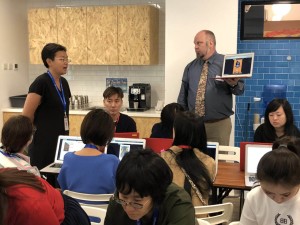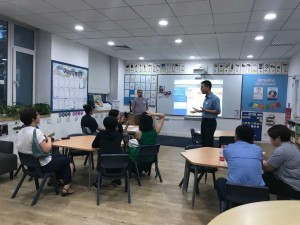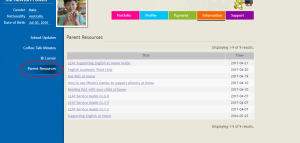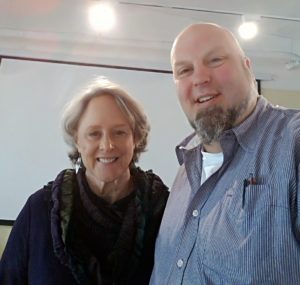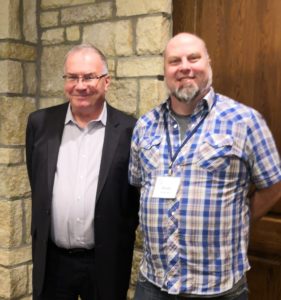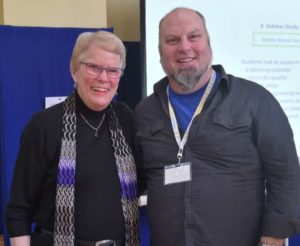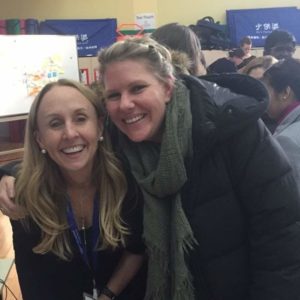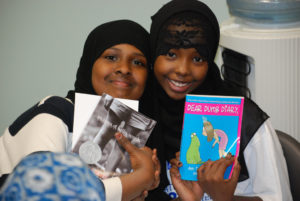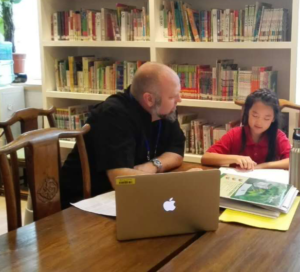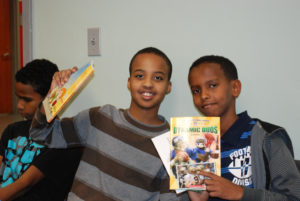Download my Diversity Statement
As an ELL/EAL/ESL educator and coordinator, I am not merely a supporter of diversity in the classroom, but believe it should be openly discussed, celebrated, and promoted—for it is diversity that gives us the opportunity to have rich and inspiring interactions with each other and the world.
While my cultural competency is certainly evolving, it is built on a lifetime of experiences. One of those core experiences for me was living and working in Hanoi, Vietnam for four years. During that time, I learned how difficult it can be to learn another culture’s norms, values and practices as an outsider. I also learned how it can feel to stick out physically and not be able to blend in, and how frustrating it can be to be surrounded by a language one doesn’t understand while trying to negotiate the nuanced demands of daily life. By leaving my own set of customs and way of life and attempting to adapt to another, I learned how culturally-based many of my assumptions were about a myriad of things like educational practices, humor and even just shopping. In short, this period transformed my life and worldview, and continues to be a touchstone for me in my teaching and personal life.
Another central experience that informed my cultural competency has been working in a school that services a student body of East African immigrants and refugees. By immersing myself in another culture and working with Somali students, families and staff on projects such as forming a Parent Teacher Organization (PTO), I have experienced first-hand the value of having many perspectives in any collaborative endeavor. In short, through open and persistent dialogue, our projects were always made stronger by including differing perspectives and opinions. Our end of the year celebration that was attended by almost 500 hundred people is but one example that comes to mind. By incorporating henna, Somali poetry and Somali food into our program, it was much more vibrant and meaningful to those in attendance.
I have also learned how important it is to be active in the pursuit of diversity. Over time, I have witnessed how easy it is for staff to culturally self-select and self-isolate in various scenarios. In one specific context, I noticed that Western teachers were resistant to learning any Somali and the Somali staff was resistant to certain pedagogical practices. To address this as an ELL teacher, I started by setting up food sharing events with my Somali coworker. Through these informal gatherings, many of the barriers between the two cultures came down as people got to know each other better as individuals through their enjoyment of food. Next, I implemented the Somali Word of the Week program, which focused on vocabulary and cultural customs and was co-taught by both Somali and Western teachers. Through this program, the staff acquired a working vocabulary of over 100 useable Somali words that center on classroom management and day to day functioning. Further, by learning elements of Somali, which is linguistically and culturally very different from English, teachers were able to relate more readily to their students’ challenges in learning English. Both staff and students reported increased enjoyment and understanding of each other through Somali Word of the Week.
Over time, with committed advocates of diversity working together, as a staff we began to build deeper relationships, address misunderstandings and find common ground with each other. One specific example of the fruits of this labor comes to mind. Through conversations over staff breakfast, kindergarten teachers were able to reach out Somali staff to request clarity regarding the use of musical mnemonic devices in class, which had previously been forbidden by the administration. Through trust-based discussion, the teachers were able to understand the notion of certain music contexts being considered haram (forbidden by Muslim teachings). After this understanding was reached, the teachers were able to reach out respectfully to parents and Somali staff members and effectively explain the educational purpose and nature of the songs in a manner that addressed concerns of parents and staff. Once the educational context was fully clarified and understood through dialogue, both Somali staff and parents were able embrace the practice of learning through song, which led to increased retention and use of phonemic awareness. I believe this process would not have happened had we not started reaching out to each other through food and language exchange.
Lastly and most importantly, throughout the last seven years, I have had the opportunity to teach students and work with colleagues from five continents representing every socioeconomic status imaginable, as well as the full spectrum of sexual orientation and identification. I have loved working with each new student and have enjoyed learning as much from my students as they have learned from me. The same can be said of my co-workers. While I value the fact that I have worked with so many kinds of people, the question remains, how has my teaching changed as a result of these experiences?
First, I strive to create an open, safe space in which students feel free to express different ideas, opinions, and worldviews. Through careful planning, I am able to weave in opportunities for students to write about and discuss their own backgrounds, influences and goals with each other. In addition, my classes co-create their own norms and expectations of each other so that everyone has a stake and voice in the tone the class. An example of this on a larger scale is a project where I facilitated the production of a series of bilingual training videos detailing school procedures and expectations. These videos were written for and by new to country refugees to help new students learn the routines and behavioral norms of the school. Students generated their own examples, co-wrote the script and acted in and directed the films. A sample video can be found at here.
In addition, I model respectful, inclusive communication that celebrates all cultures and ways of living. As I believe that respect is an active rather than a passive act, I also personally strive to practice and model empathy. My experiences have taught me that it is always valuable to appreciate how someone else might be thinking and feeling. I make this expectation explicit for my students by openly discussing empathy practices with them and having them use specific writing journal prompts to adopt perspectives that are different than their own as a way of practicing both empathy and higher-level reasoning. Together, this provides the basis for safe and dynamic communication and the negotiating of complicated ideas while honoring diversity. I believe this benefits my students in several ways. For one, my classes are receptive, supportive environments where students can try out both language features and ideas that are new and challenging to them. Further, by attempting to try on others’ perspectives, I have witnessed my students becoming more flexible and more thorough in their reasoning—thus becoming more engaged and committed class citizens.
My awareness and appreciation of cross-cultural understanding continues to grow. I work to increase my fledging fluency in Somali and Mandarin because practicing a second language helps me appreciate the challenge faced by students who are simultaneously learning English and academic content. As a teacher, I listen to my students carefully and always strive to remember what it is like to be immersed in a new culture. I set aside my own perceptions of what academic or linguistic concepts are “easy” or “hard” to understand because these assumptions are based on my cultural and educational background, not that of my students. Finally, I am inspired when my students learn English in ways that are meaningful to them. As such, I strive to introduce them to a variety of materials from assorted of backgrounds, and to support them as they shape their own identities as scholars.
Download my Diversity Statement
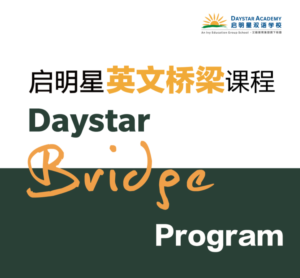 Daystar Academy is a strong bilingual immersion program that develops world citizens by embracing Chinese and Western culture through its integrated education model. Daystar students strive for distinction in comprehensive Chinese and English studies, creative thinking and character development for the purpose of serving the community at large. In short, Daystar students are highly bicultural and biliterate to a degree few people ever achieve.
Daystar Academy is a strong bilingual immersion program that develops world citizens by embracing Chinese and Western culture through its integrated education model. Daystar students strive for distinction in comprehensive Chinese and English studies, creative thinking and character development for the purpose of serving the community at large. In short, Daystar students are highly bicultural and biliterate to a degree few people ever achieve.
